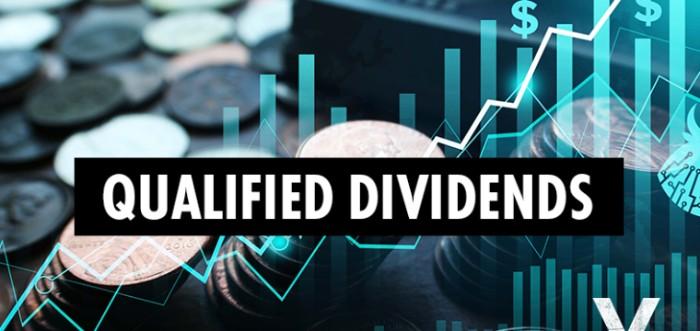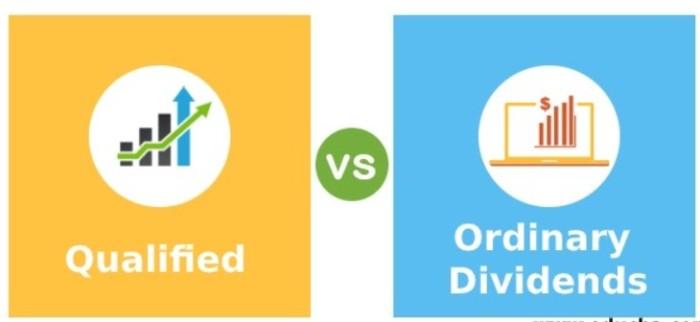What Is a Qualified Dividend?
May 30, 2023 By Kelly Walker
Do you ever wonder what a qualified dividend is? Are you seeking more information on this confusing topic to make smart investment decisions? Read on as we explain everything about qualified dividends.
We’ll review the different types of dividends, how they are taxed, and whether or not they qualify for special tax treatment. Once you know all the facts, you can start making informed decisions regarding your portfolio and investments.
Qualified Dividends

Qualified dividends are a type of dividend payment that investors receive from owning stocks in certain companies. The Internal Revenue Service (IRS) taxes them at special, reduced rates.
The benefits of qualified dividends are twofold: not only do you get a share of the profits generated by the company, but you also get to keep more of the money due to lower taxes.
Tax Implications of Qualified Dividends
Regarding taxes, qualified dividends are treated differently from other types of income. They are subject to the same rate as long-term capital gains, typically lower than regular income such as wages or salary. Investors can save money on their overall tax bill by investing in stocks that pay qualified dividends.
It's important to note that the tax benefits of qualified dividends are only available if you meet certain eligibility criteria. Generally, to be eligible for the lower rate, you must have owned the stock for more than 60 days during the 121 days beginning 60 days before the ex-dividend date (the date a stock begins trading without the dividend payment).
Your qualified dividends will be taxed at your regular income tax rate if you don't meet these terms. This is why it's important to research stocks thoroughly before investing and ensure you meet all the eligibility requirements for a qualified dividend.
How to Calculate Your Qualified Dividend Income
When calculating your qualified dividend income, there are several factors to consider.
First, you must identify which dividends qualify for special tax treatment. Dividends from domestic and most foreign corporations are eligible for qualified dividend status. Other types of distributions, such as capital gains, may not be eligible.
Next, you must determine which dividends from the qualified corporations are eligible for special tax treatment. Generally, this means that you have held your stocks or other investments in the company for more than 60 days during 121 days beginning 60 days before the ex-dividend date.
You then must calculate what portion of the dividend is considered qualified dividend income. To do this, subtract any amount received as a return of capital - such as when you reinvested part or all of the total dividend in additional shares - from the total amount of your distributions. Then multiply this figure by your tax rate to get your qualified dividend income.
Finally, when calculating your qualified dividend income, you must include any applicable foreign taxes paid on qualifying dividends from certain foreign companies.
It is important to note that these calculations apply to individual taxpayers and may vary based on your situation and investment type. You should consult a financial advisor or tax professional when calculating your qualified dividend income.
Benefits Of Investing In Qualified Dividend Stocks
Dividend Reinvestment Plans (DRIPs)
Qualified dividends may be eligible for dividend reinvestment plans (DRIPs), allowing investors to automatically reinvest their dividends into the same stock. This allows investors to accumulate more shares over time and enjoy compounding investment returns.
Long-Term Capital Gains
Investing in qualified dividend stocks allows for realizing long-term capital gains, as these are taxed at a lower rate than regular income. This makes them a great way to maximize your return on investment while minimizing your taxable income.
Stability of Income
In addition to providing tax benefits, investing in qualified dividend stocks can also benefit from income stability. With qualified dividends, you’ll have a reliable income stream to supplement your regular income or fund retirement.
Consistent Dividends
Qualified dividend stocks typically pay consistent dividends, allowing investors to benefit from the steady growth of their investments. Even if the stock does not appreciate, investors can still earn a return on their investment through dividends.
Lower Volatility Risk
Investing in qualified dividend stocks exposes you to less volatility and risk than other investments, such as commodity futures or options trading. This makes them ideal for those looking for stability and preservation of capital.
Tips For Finding The Best Qualified Dividend Stocks
If you’re looking for qualified dividend stocks, there are some tips and tricks to remember as you search.
First, consider the company’s track record of paying regular dividends. Consistent companies can be a safer bet than those with more sporadic payments.
Also, look at the dividend yield – the amount paid per share annually, expressed as a percentage based on the stock’s current market price. Yields vary widely depending on the sector and other variables – look for companies with higher yields with lower risks.
Finally, check the financial health of any company before investing your money in its stocks; analyze balance sheets for warning signs of potential bankruptcies or other financial distress.
It’s also important to assess the risk associated with a particular stock or company – understand how macroeconomic factors and industry dynamics could affect the stock’s performance in the long term.
What Is the Difference Between Ordinary & Qualified Dividends

Dividends can generally be broken down into two categories – ordinary and qualified. Ordinary dividends are the most common type and are taxed at the same rate as your regular income tax bracket.
Qualified dividends, on the other hand, are taxed at a lower rate than ordinary dividends, thanks to special tax benefits provided by the federal government.
Qualified dividends are paid out by companies that meet certain requirements set forth by the Internal Revenue Service (IRS). To qualify, a company must be a U.S. corporation or certified foreign corporation and have to have held the investment for at least 60 days during the 121 days beginning 60 days before the ex-dividend date.
FAQs
What are some common stocks that pay qualified dividends?
Many companies pay qualified dividends, including some of the world's largest and most well-known businesses. Some of the more common stocks that offer qualified dividends include Microsoft Corporation (MSFT), Apple Inc. (AAPL), Johnson & Johnson (JNJ), IBM Corporation (IBM), Procter & Gamble Co. (PG), and JPMorgan Chase & Co. (JPM). How can I tell if a dividend is qualified?
How can I tell if a dividend is qualified?
To determine whether or not a dividend is qualified, you must first look at the issuer. For U.S.-sourced dividends, only certain domestic and foreign companies are eligible to pay qualified dividends. Additionally, the stock must have been held for more than 60 days during the 121-day period that begins 60 days before the ex-dividend date.
What is the tax rate for qualified dividends?
The tax rate for qualified dividends is 0%, 15%, or 20%. The rate depends on your filing status and taxable income.
Conclusion
Qualifying dividends are a great way to increase your income while enjoying certain tax benefits. It is important to consider the difference between ordinary and qualified dividends and decide which investments are right for you. Remember to calculate your qualified dividend income and know the tax implications of your investments in qualified dividend stocks. With these tips, you can confidently invest in qualified dividend stocks and potentially create a second source of income.

Apr 11, 2023 John Davis

Apr 03, 2023 John Davis

May 16, 2023 Kelly Walker

Aug 26, 2023 John Davis

Mar 30, 2023 Kelly Walker

Oct 16, 2023 Kelly Walker